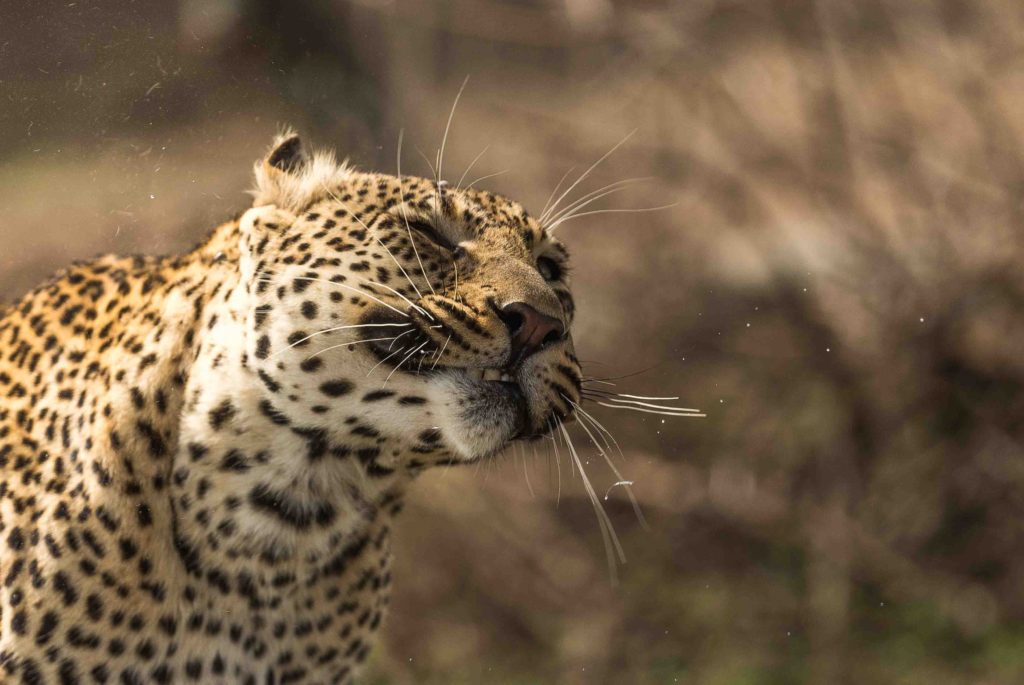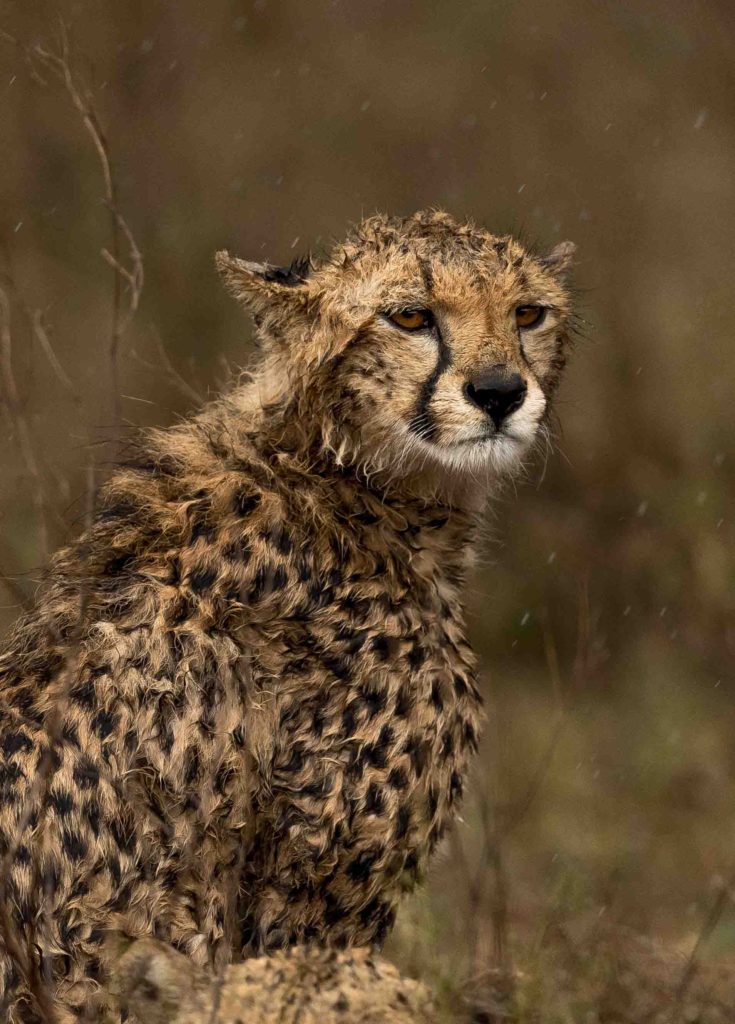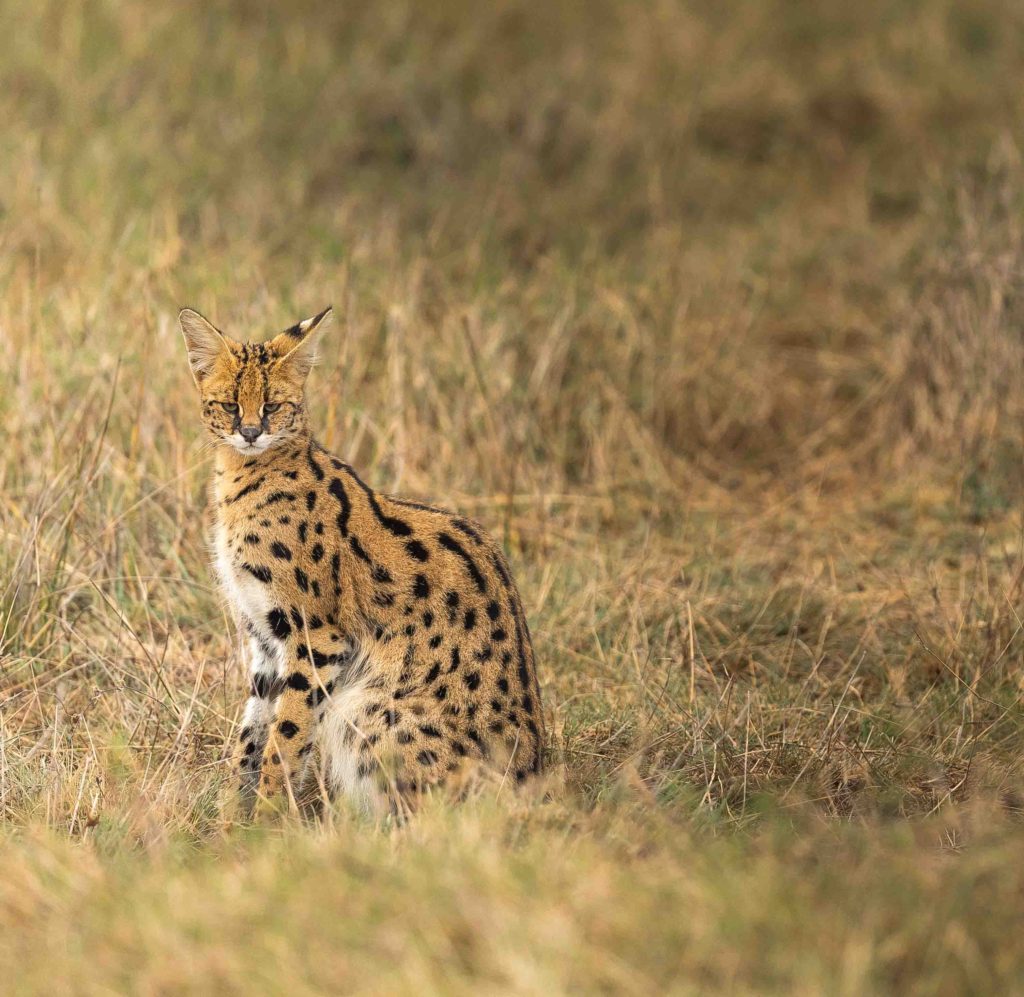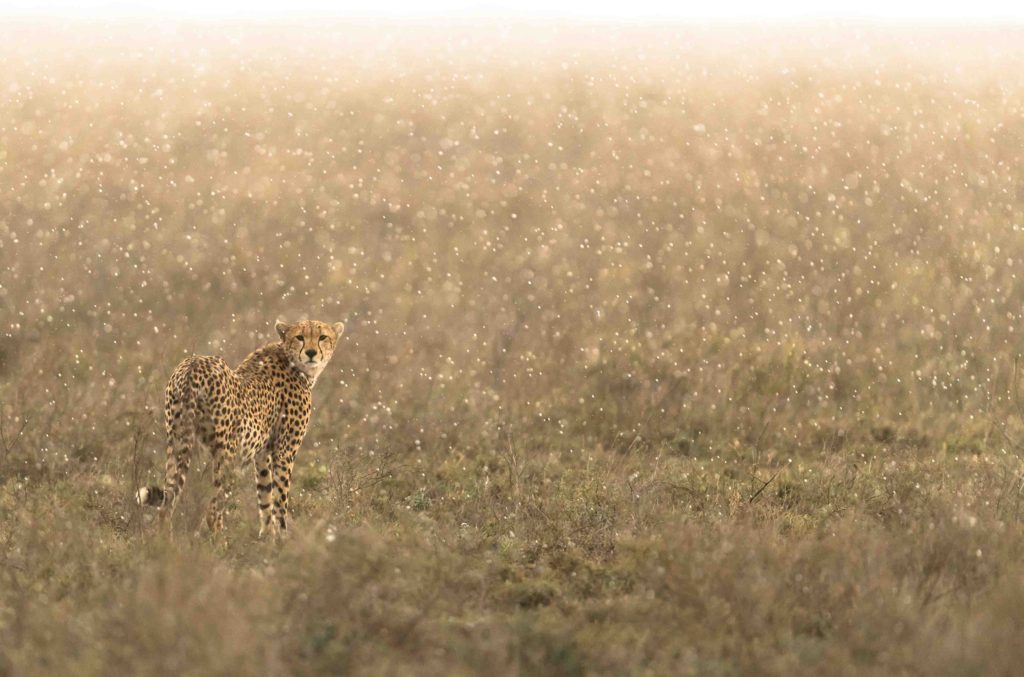In Search of “The Shot”
By George Turner – George the Explorer
If you ask any wildlife photographer whether they’ve captured “The Shot” yet and 99% of the time the answer will simply be: no.
“The Shot” is that career defining image, one that’s been dreamt of for years, that cements your place in the world of wildlife photography. It’s something you plan for and then hope for, only to see it slip from your grasp countless times; conditions don’t quite add up, your subject isn’t playing ball or of course, human error.

Credit: George Turner
Before I visited Olakira Camp in Ndutu, I was told of a cheetah with two 3-4 month old cubs. Already knowing that the beautiful plains just outside camp lend themselves so well to photography, my brain started whirring away. Not only that, late January is an amazing time of year weather wise; storm cells can roll in/out within minutes and, when mixed with the strong Tanzanian sun, can result in some stunning conditions.
Knowing all of this, I scribbled away on my battered notepad – the front of which reads “Possibly Impossible Shot Ideas – with some loose plans.
First point: I needed a cheetah. This, of course, is easier said than done. Second point: I needed rain. Heavy rain. Not only that but also, the raindrops needed to be big. Third point: I needed a distant light to illuminate the raindrops. Fourth point: the cheetah needed to be looking right at me.
I wasn’t asking for much, right?!
Fast-forward a few weeks and I was landing at Olakira airstrip in, you guessed it, heavy rain. Whilst most might be slightly deterred by the sight of a watery deluge, I was beyond excited. The conditions I’d envisioned were possible.

Credit: George Turner
After meeting my guide, Patena, he asked about my goals and any particular animals to look out for. Other than the elusive little cats – one being the serval, which we saw 30 minutes later (!) – it was all about the cheetah.

Credit: George Turner
On the first day we saw plenty cheetah but sadly, the conditions weren’t quite right. We used the time to properly observe the cheetahs and their behaviors, in the hope that if/when the time came, I could use that knowledge when it mattered most.
Patenatold me all about each particular cheetah; their character, history, and so on. As a wildlife photographer, this really helps builds a mental image in your mind. It’s absolutely vital that an image reflects the personality of your subject. He described the female that we kept encountering as ‘delicate but stubborn’, as she was small for an adult yet she’s battled the elements and raised nearly 6 cubs successfully.
Then, on the third day, magic happened. After a day spent in the central Serengeti photographing leopards, lions, and elephants, we headed back towards Ndutu.
Behind us, huge, dark storm clouds began to form. In front of us, grey skies became blacker and the clouds swelled. All around us, the rumble of thunder began rolling across the plains. Then, the rain.
Upon reaching Ndutu we set off in search of a cheetah. To our absolute surprise, the female we’d seen so many times appeared out of nowhere. It was almost ghostly. Ahead, the lowering sun began to break through cloud, illuminating every single raindrop. This. Was. It.
She ran in front of us, looking back for all of 3 seconds. I fired the camera maybe 4-5 times and it was over, she was gone.

Credit: George Turner
Whilst it’s not quite “The Shot”, the excitement and exhilaration of seeing a jigsaw come together is something that’ll stay with me forever. Moreover, we then drove to where the female and her cubs took shelter, spending an hour or so with them all as we also waited for the rain to subside. For me, that was the most special moment, staring in total awe at these beautiful animals.
The post In Search of “The Shot” appeared first on Asilia Africa.
More Experiences Articles

Experience A Slow Safari
26 July 2019By Anwynn Louw – Digital Marketing Assistant The Art of Slow Travel – “Slow T...

BBC One: Serengeti – The Elephant
25 July 2019By Britta Foulis – Content Marketing Manager BBC One’s latest mi...

Four Great Locations For A Family Reunion Safari In East Africa
19 July 2019By Anwynn Louw – Digital Marketing Assistant Planning a multigenerational saf...

BBC One: Serengeti – The Baboon
17 July 2019By Britta Foulis – Content Marketing Manager BBC One‘s latest mi...






